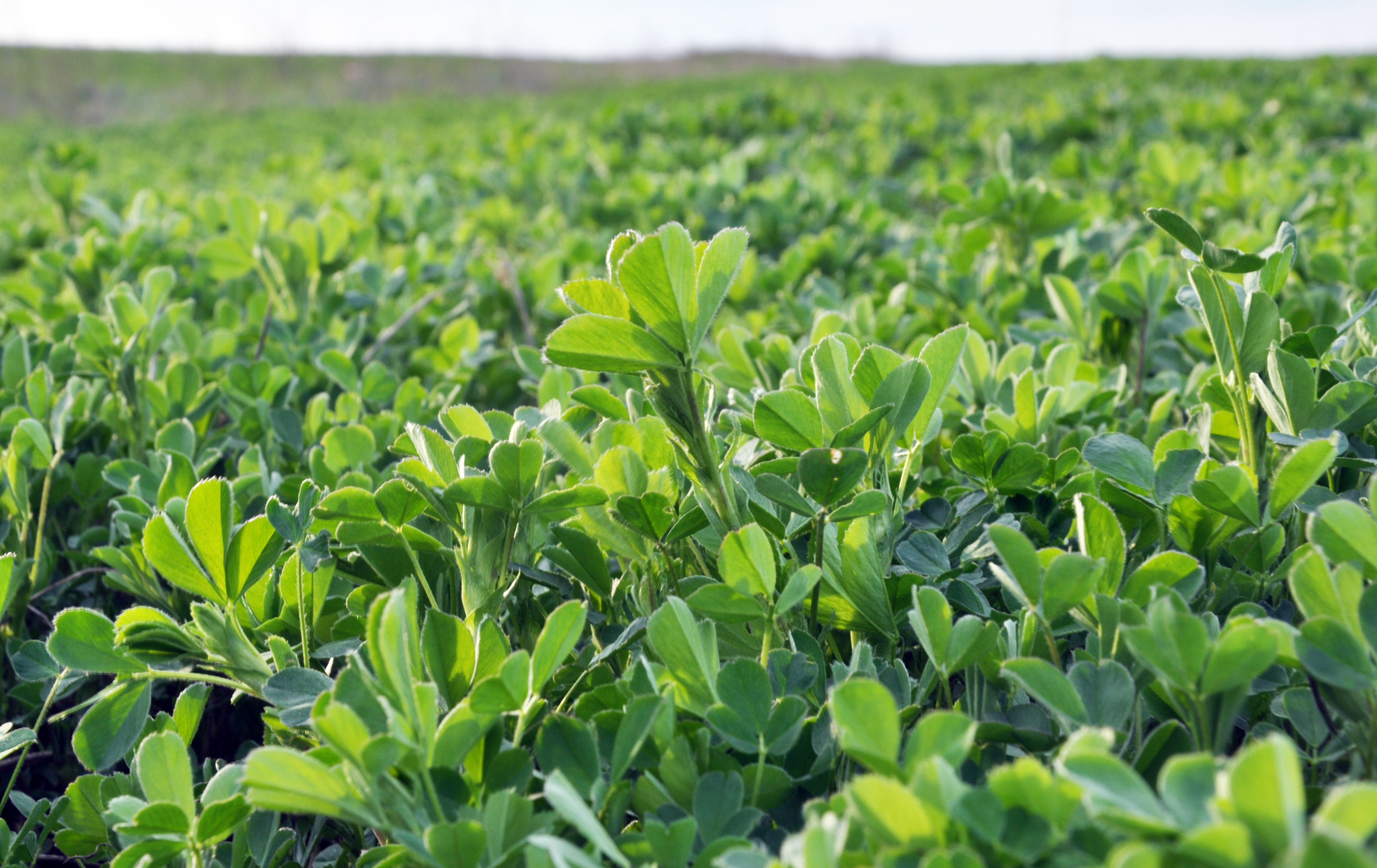Capillary Electrophoresis with Laser-Induced Fluorescence Detection Analyzes Flavonoids in Two Forage Grass Seeds
Representatives of three subclasses of flavonoids were targeted for identification and quantitation in non-destructive single seed evaluation of Medicago sativa and Melilotus officinalis.
Newly published research out of Lanzhou University in China sought a non-destructive method for the analysis of single seeds of two forage grasses, Medicago sativa (alfalfa) and Melilotus officinalis (sweet clover), so that certain flavonoids could be determined with an eye toward better future species identification, source tracing, seed breeding, quality control, and evaluation of metabolisms for these plants and their derivatives (1).
In the spring field young alfalfa grows | Image Credit: © orestligetka - stock.adobe.com

The study published in the Journal of Chromatography A specifically selected apigenin, kaempferol, and formononetin as representatives of three respective classes of flavonoids: flavone, flavonol, and isoflavone. These and other subclasses have come to define this set of natural, secondary metabolites often used as feed additives in livestock and aquatic animal breeding (1).
And while flavonoids were touted by the researchers as excellent antioxidants with anti-cancer and anti-inflammatory potential – not to mention being effective alleviators of symptoms of diabetes mellitus and cardiovascular and neurodegenerative diseases – excessive consumption has been known to lead to detrimental effects like thyroid function inhibition (1). Therefore, a suitable method of flavonoid analysis was sought in this study for application in quality assessment and processing standards.
The research team sequentially reviewed the drawbacks of multiple chromatographic methods before providing the justification for why capillary electrophoresis (CE) with laser-induced fluorescence (LIF) detection was used for the alfalfa and sweet clover samples. Gas chromatography, they said, was not suitable due to flavonoids’ inherently poor volatility, and although liquid chromatography (LC) with either ultraviolet or diode array detection is a better match, sensitivity is often not up to par (1). Tandem mass spectrometry (MS/MS), especially when coupled with LC, is a powerful and highly sensitive choice according to the researchers, but is high-cost and requires the expertise of seasoned specialists.
Choosing CE–LIF, on the other hand, provides fast, green, multimodal and highly efficient liquid phase separation in the CE process, and with the running buffer of CE often limited by MS, LIF detection (405 nm, in this case) offers high sensitivity through an easy-to-focus laser (1). Also in this study, solid-phase extraction (SPE) was used for “sample clean-up,” as the researchers reported.
In CE–LIF, a capillary tube is filled with an electrolyte solution, and an electric field is applied across the tube. Sample molecules, which may be charged or uncharged, are injected into the capillary and separated based on their charge-to-mass ratio as they migrate towards the oppositely charged electrode. Laser-induced fluorescence detection is employed to enhance sensitivity and selectivity. A laser beam is focused on the capillary, causing the sample molecules to fluoresce. The emitted fluorescence is collected and analyzed, providing valuable information about the identity, quantity, and purity of the separated analytes.
A running buffer of 20 mM sodium tetraborate, 10 mM sodium dodecyl sulfate, and 10% methanol with pH 8.5 yielded dynamic derivatization in the capillary, the researchers said, with baseline separation within 10 min. At detection limits of 0.92–35.46 nM with a signal-to-noise ratio of 3, nine flavonoids were detected, with those that were quantified in Medicago sativa and granulated alfalfa registering recoveries of 80.55% to 94.25% (1).
The developed CE–LIF method not only demonstrated successful flavonoid analysis, but the study also highlighted its potential for non-destructive distinction of single seed of alfalfa and sweet clover by principal component analysis. These efficiencies suggest further use in the determination of flavonoids in plant species.
Reference
(1) Xia, J.; Zhou, J.; Liu, Y.; et al. Non-destructive distinction of single seed for Medicago sativa and Melilotus officinalis by capillary electrophoresis with laser-induced fluorescence detection. J. Chromatogr. A 2023, 1704, 464116. DOI: 10.1016/j.chroma.2023.464116
New Study Investigates Optimizing Extra-Column Band Broadening in Micro-flow Capillary LC
March 12th 2025Shimadzu Corporation and Vrije Universiteit Brussel researchers recently investigated how extra-column band broadening (ECBB) can be optimized in micro-flow capillary liquid chromatography.

